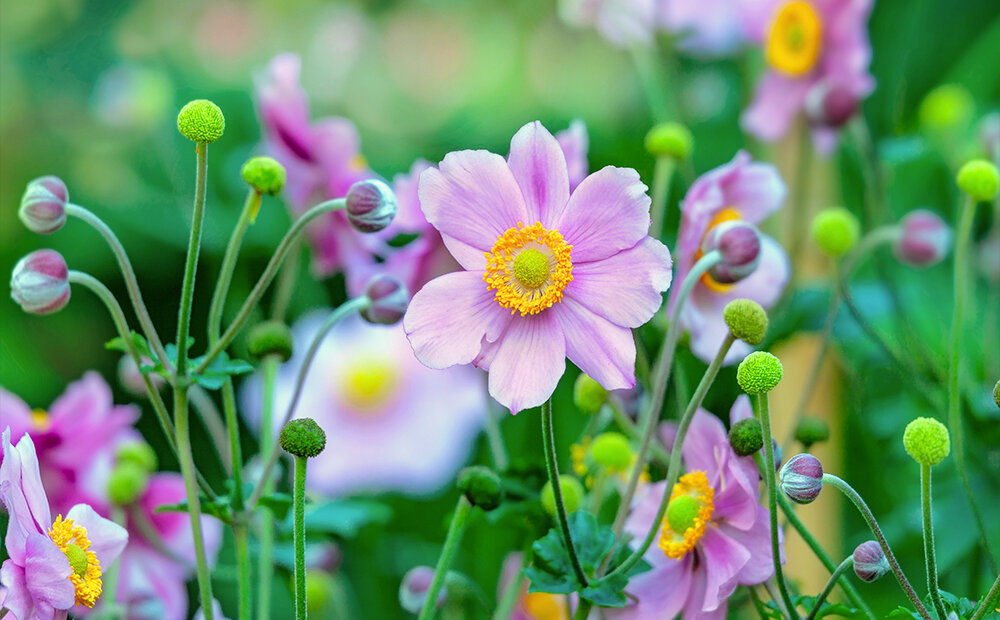WHAT YOU SHOULD KNOW ABOUT PLANTING SUMMER FLOWERING BULBS
A garden full of blooming flowers, from spring to fall, is a dream come true for many gardeners. Can you imagine your own yard full of flowers, with new colors popping up here and there every other week, all summer long? A yard like this may not be as difficult to achieve as you expect.
With a bit of planning, you can fill your garden with a wide range of flowers that are pretty easy to grow and don't require much maintenance after initial planting. Flower bulbs are a gardener's best friend for low-maintenance gardening and endless blooms.
Most summer-blooming bulbs are what's considered to be tender perennials. This means that they're technically a perennial in warmer areas, but they won't survive our winters here in Indiana. You can dig up your summer blooming bulbs in the fall, after the foliage has died back. Be sure to dry them thoroughly, then store them somewhere dark, cool, and well ventilated for the winter.
While spring blooming bulbs should be planted in the fall, summer-blooming bulbs should be planted in mid-spring, after the frost's risk has passed. Usually, we’re safe to plant summer-blooming bulbs after the second week of May. However, if you haven’t planted your summer bulbs yet, it’s not too late! Here are a few of our favorite bulbs to plant for gorgeous color all summer long.
Dahlias are a colorful garden staple. There are thousands of different dahlias, in any color that you can imagine. They also come in a wide variety of shapes, styles, and sizes, from tiny 2-inch flowers to dinner-plate size blooms.
Gladiolus are an exotic summer-blooming bulb. They have a distinct tropical style, and they are also available in an endless array of colors. The tall sword-like stalks are loaded with beautiful blooms in late summer. For earlier blooms, you can give gladiolus a head start by starting them in a shallow dish of water indoors in early April. To enjoy their flowers longer into the year, plant the corms in batches each week until late June.
Canna lilies are also quite tropical in style. They bloom in mid-to-late summer and are available in a range of warm yellows, reds, pinks, and creams. Their large leaves resemble those of the banana plant leaves and are quite dramatic.
Agapanthus feature globes of small white or blue flowers on top of tall, slender stalks. Agapanthus likes its roots to be a bit snug in order to deliver the finest blooms, so planting it in a container will encourage its best performance.
Begonias are a lower-growing summer flowering bulb. Begonias come in a wide variety of vibrant colors. Many of them have lush, dark green leaves that really accentuate the beautiful color of their flowers.
There are a few winter-hardy perennial bulbs that you can plant for summer blooms as well.
Most Anemones are tender spring-blooming bulbs. However, there are a few varieties with small white, blue, or pink flowers that bloom in the summer, and are hardy enough to survive an Indianapolis winter. Meadow Anemone, Wood Anemone, Snowdrop Anemone, and Japanese Anemone's will survive here.
Crocosmia are an exotic looking perennial bulb with sword-shaped leaves and arching wands with rows of brilliant red, orange, or yellow flowers. Crocosmias are a hummingbird magnet!
Reblooming irises bloom all summer and are available in a wide variety of colors and styles. There are even reblooming bearded irises that will bloom all summer and survive our winters.
Liatris is a summer-blooming perennial bulb that features tall flower spikes, usually in pink, purple, or white. Liatris is very popular with pollinators such as butterflies.
Reblooming lilies are a flower garden staple; Daylilies are some of the easiest. Their exotic flowers bloom profusely and reliably every year and can withstand anything winter throws at them. These are the ultimate low-maintenance blooming perennial bulb. You can genuinely plant them, water them, and then pretty much forget about them.
You can still plant most of these summer-blooming bulbs if you get to it right away! Otherwise, start making a list of the ones you like so that you can get them in the ground in early May of next year for a summer full of color in your garden.






